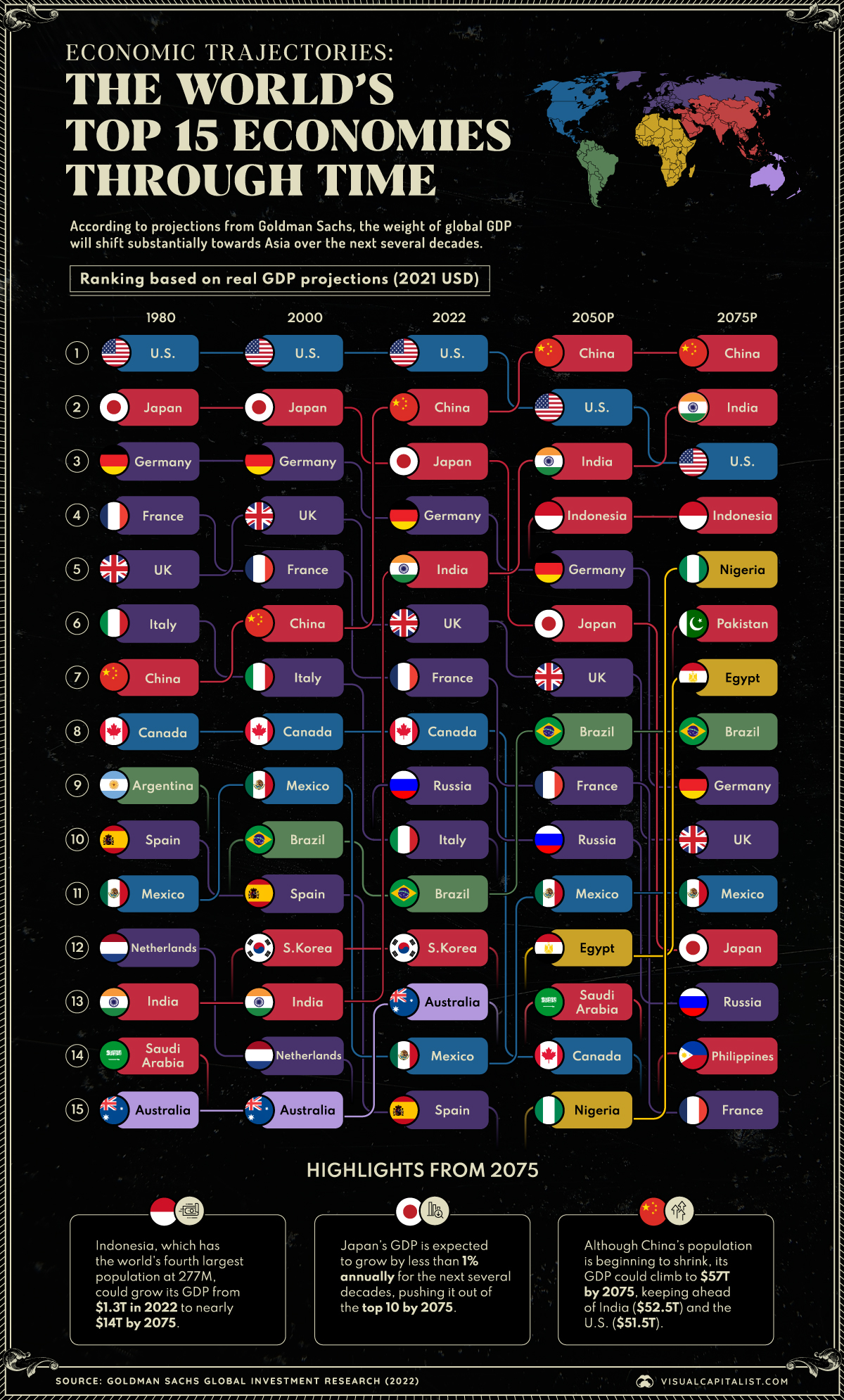Ranked: The Top Economies In The World (1980‒2075)
(Click on image to enlarge)

According to a recent report from Goldman Sachs, the balance of global economic power is projected to shift dramatically in the coming decades.
In the graphic above, we’ve created a bump chart that provides a historical and predictive overview of the world’s top 15 economies at several milestones: 1980, 2000, 2022, and Goldman Sachs projections for 2050 and 2075.
Projections and Highlights for 2050
The following table shows the projected top economies in the world for 2050. All figures represent real GDP projections, based on 2021 USD.

A major theme of the past several decades has been China and India’s incredible growth. For instance, between 2000 and 2022, India jumped eight spots to become the fifth-largest economy, surpassing the UK and France.
By 2050, Goldman Sachs believes that the weight of global GDP will shift even more towards Asia. While this is partly due to Asia outperforming previous forecasts, it is also due to BRICS nations underperforming.
Notably, Indonesia will become the fourth biggest economy by 2050, surpassing Brazil and Russia as the largest emerging market. Indonesia is the world’s largest archipelagic state and currently has the fourth-largest population at 277 million.
The Top Economies in the World in 2075
The following table includes the underlying numbers for 2075. Once again, figures represent real GDP projections, based on 2021 USD.

Projecting further to 2075 reveals a drastically different world order, with Nigeria, Pakistan, and Egypt breaking into the top 10. A major consideration in these estimates is rapid population growth, which should result in a massive labor force across all three nations.
Meanwhile, European economies will continue to slip further down the rankings. Germany, which was once the world’s third largest economy, will sit at ninth behind Brazil.
It should also be noted that China, India, and the U.S. are expected to have similar GDPs by this time, suggesting somewhat equal economic power. As a result, how these nations choose to engage with one another is likely to shape the global landscape in ways that have far-reaching implications.
More By This Author:
How U.S. Vehicle Production Has Shifted Over 45 Years
Visualized: The U.S. $20 Trillion Economy By State
The 50 Best One-Year Returns On The S&P 500 (1980-2022)
Disclosure: None.



